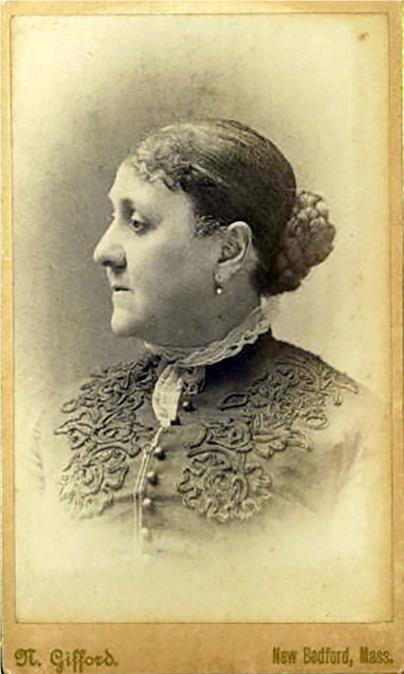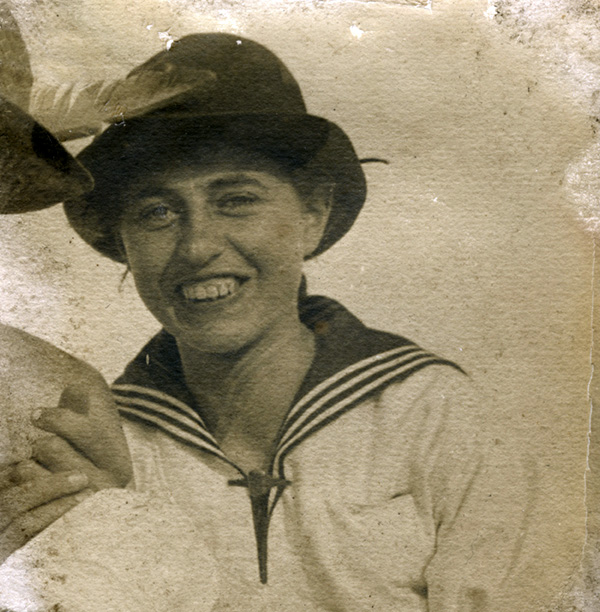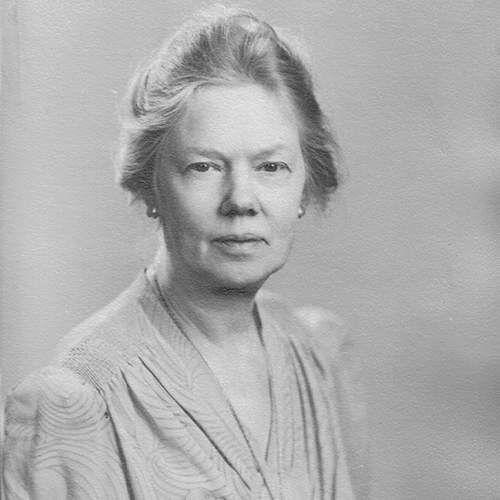Emily Howland Bourne (1835-1922) showed the same careful planning in her inspired philanthropy as her father Jonathan showed in his successful whaling ventures. Emily was born on October 7, 1835, to Emily Summers Howland and Jonathan Bourne, one of New Bedford’s most successful whaling merchants.
Emily took care of the family while her father amassed a fortune, as her mother suffered from mental illness. After her father’s death in 1889, Emily focused on giving back by funding various projects from Cape Cod to New York in memory of him and the family. She administered her wealth with a conscience that both honored her family and enriched its communities. Emily planned and attended dedications without speaking, preferring to quietly celebrate project completions as recipients expressed gratitude. Each gift was a labor of love that spoke for itself.
In 1897, Emily funded the original building of the Bourne Public Library in Bourne, the town named for her father. In 1912, in memory of her family, Emily donated a new building for the Bourne Workshop for the Blind in New York, where she spent winters. The Bourne Workshop for the Blind was the first modern factory building for the blind, employing up to 150 broom makers and chair caners. At its dedication, the basket making students presented Emily with a basket of rosebuds.
In a letter dated January 4, 1915, Emily confirmed her financing of the Jonathan Bourne Whaling Museum (now the Bourne Building of the New Bedford Whaling Museum) as a memorial to her father. She also funded a replica of the Lagoda, her father’s favorite and most successful whaling bark, to be built as a half-scale model within the museum’s walls. Emily hired distinguished architect Henry Vaughn as the building architect and Edgar B. Hammond as replica supervisor. It was constructed by skilled artisans with attention to every detail. Captain Edward D. Lewis, commander of the Lagoda on three voyages, and his wife, who spent 10 years aboard the Lagoda, shared precise details regarding the vessel’s rig, including information about her deck and cabin. Master shipbuilder William H. Cook assisted Hammond. Several remaining whaling ship carpenters were hired for the job. Emily gifted both the building and the ship model to the Old Dartmouth Historical Society in her father’s memory to preserve the history of the waning whaling industry for future generations. In 1915, the building cost about $50,000 and the Lagoda replica cost an additional $25,000. Emily’s $75,000 donation would be equal to over $1.7 million today.
Ann O’Leary
Information from
-
Medeiros, Peggi. “The Woman Behind New Bedford’s Lagoda.” SouthCoast Today, 19 Nov. 2016, http://www.southcoasttoday.com/news/20161119/peggi-medeiros-woman-behind-new-bedfords-lagoda.
-
“Miss Bourne’s Gift to Blind Dedicated.” The New York Times, 17 Oct. 1912. Disability History Museum, http://www.disabilitymuseum.org/dhm/lib/detail.html?id=2638.
-
Motta, Arthur. “100 Years Ago Today: Jonathan Bourne Whaling Museum Building Project Begins, 1915.” New Bedford Whaling Museum Blog, 4 Jan. 2015, https://whalingmuseumblog.org/2015/01/04/100-years-ago-today-jonathan-bourne-whaling-museum-building-project-begins-1915/.
-
Pease, Z. W. “The Story of the Building of the Bourne Whaling Museum with Reminiscences of Old Counting Rooms.” Old Dartmouth Historical Sketch Number 44, Old Dartmouth Historical Society, 3 Apr. 1916, New Bedford Whaling Museum, https://www.whalingmuseum.org/explore/library/publications/old-dartmouth-historical-sketches/odhs-no-44.
![Kent, J. H. (photographer), “[Emily Howland Bourne]”, c. 19th century, Photograph (carte-de-visite), Courtesy of New Bedford Whaling Museum, 2000.100.50. Kent, J. H. (photographer), “[Emily Howland Bourne]”, c. 19th century, Photograph (carte-de-visite), Courtesy of New Bedford Whaling Museum, 2000.100.50.](https://historicwomensouthcoast.org/wp-content/uploads/2017/12/Emily-Howland-Bourne-600x600.jpg)




